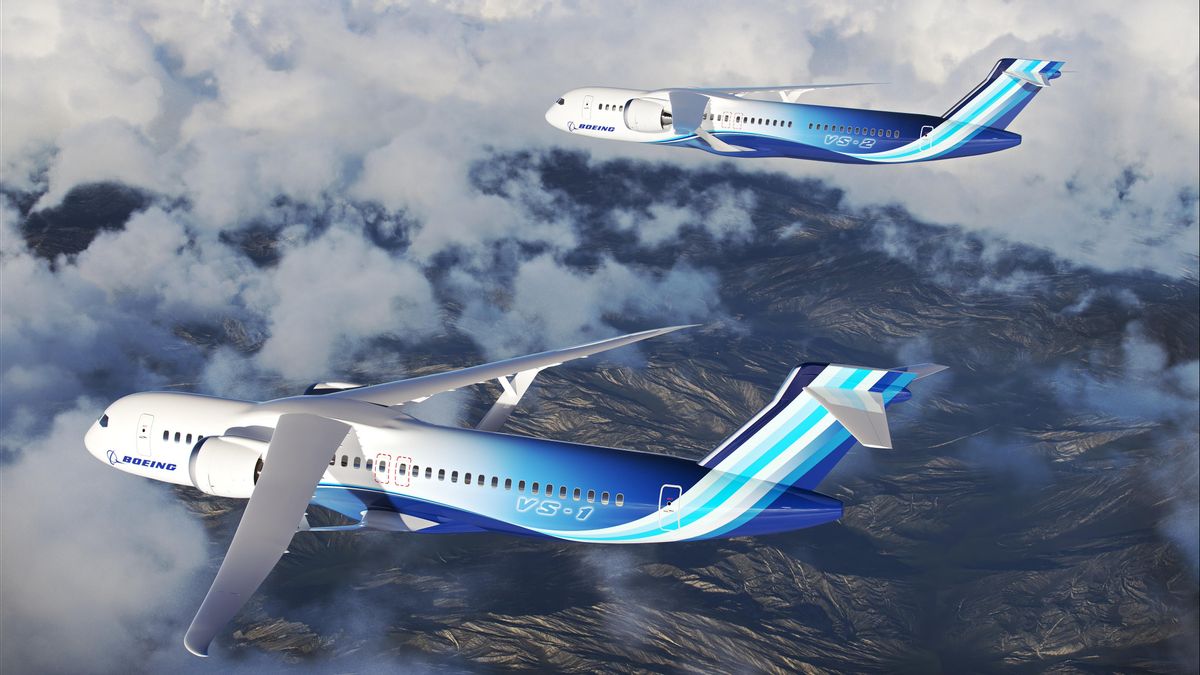JAKARTA - NASA on Thursday January 19 announced it would work with Boeing on a new type of fuel-efficient single-aisle aircraft for commercial use, with the aim of reducing fuel emissions and reducing the climate impact of aviation.
“Most of you think of NASA as a space agency and as an aviation agency. But it is also a climate agency,” said NASA administrator Bill Nelson in a press conference quoted by The Verge.
NASA monitors Earth from space, uses tools such as satellites to monitor global weather conditions and water systems, and develops technology to reduce carbon emissions.
We’re partnering with @Boeing to develop technologies for the next generation of single-aisle aircraft. We'll collaborate on a full-scale demonstrator by 2030 to help the U.S. achieve net-zero carbon emissions from aviation by 2050. Follow @NASAAero: https://t.co/dFikvL0YPa pic.twitter.com/TMXIupCyEh
— NASA (@NASA) January 18, 2023
But NASA is also developing aircraft, such as the X-57 Maxwell electric plane and the Super Guppy transport plane. This included developing the aviation technology that would eventually lead to the types of commercial airplanes most of us use today.
“When you fly in any plane, you are surrounded by NASA technology,” said Nelson. Developments in aircraft design such as winglets, small vertical extensions of wings, were invented by NASA in the 1970s and are now ubiquitous on passenger aircraft.
The agency hopes the Sustained Flight Demonstration project can provide similar innovations in the form of a new wing structure called a transonic frame support wing. Innovation will work with Boeing to design and build the new aircraft, which should be more fuel efficient and can use up to 30 percent less fuel than current aircraft designs.
The concept was an airplane with more efficient engines and wings that sat high on the fuselage and was longer and less wide, supported by struts coming from the underside of the fuselage. This concept creates less drag, while the wings and struts provide lift.
VOIR éGALEMENT:
"The aerodynamics of this kind of configuration have actually been known for a long time," said Bob Pearce, associate administrator of NASA's Flight Research Mission Directorate. “If you increase the aspect ratio of the wing, you will naturally decrease the induced drag of the plane, the drag due to lift. We know that if we do this you get better aerodynamics, you get less drag, you burn less fuel.
The challenge, in this case, was to create the necessary structure for this wing shape without adding too much weight to the plane. Boeing unveiled the first version of the concept in 2019, but it will take several years to integrate the other technologies and move from demonstration to practical use.
The idea is that, unlike NASA's quiet X-59 QueSST supersonic aircraft, which is also currently under development but will never carry passengers, as it is not simply an experimental aircraft.
Instead, NASA wants to develop technology that can be used commercially. "This project aims to revolutionize the type of aircraft that the public most often takes to the skies," said Nelson.
NASA is aiming to fly the first prototype in 2028 and for commercial use in the 2030s.
The English, Chinese, Japanese, Arabic, and French versions are automatically generated by the AI. So there may still be inaccuracies in translating, please always see Indonesian as our main language. (system supported by DigitalSiber.id)
















